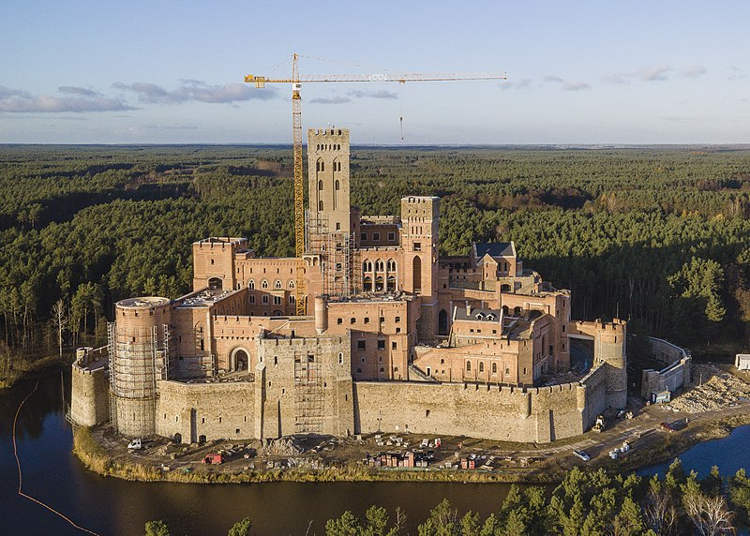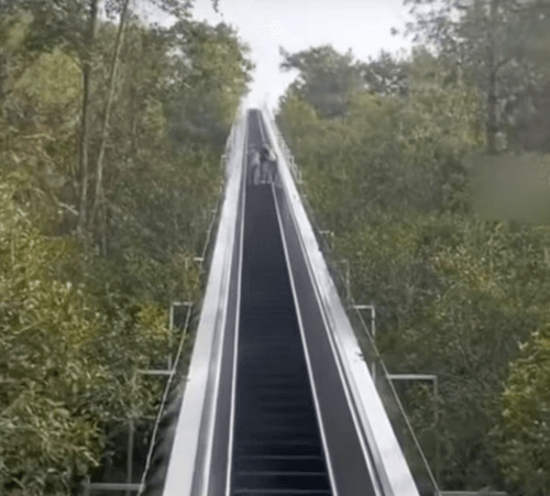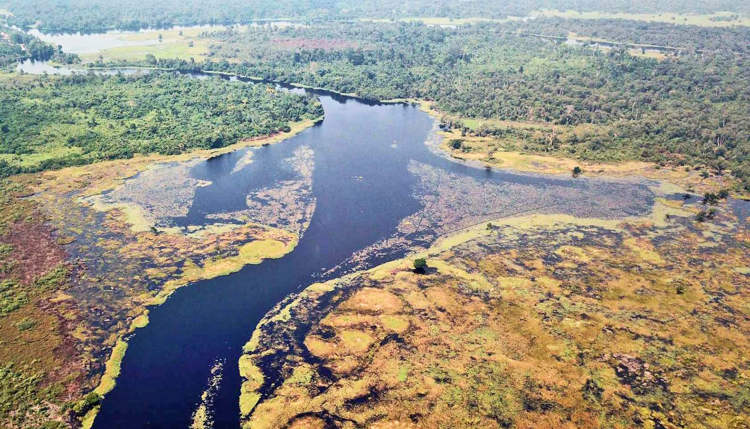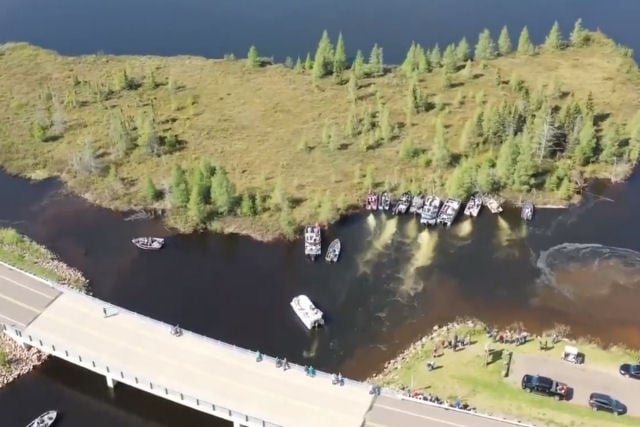Pakistan’s Famous Chained Tree Has Been Under Arrest for Over a Century

The Chained Tree of Peshawar, in Pakistan, has been under arrest since 1899, when a British officer decided to teach it a lesson for moving away from him. It has remained chained ever since. 125 years ago, a drunk British officer by the name of James Squid performed one of the most bizarre arrests in […]
Tokyo Cafe Caters Exclusively to Negative People

Mori Ouchi, a cozy cafe in Tokyo’s laidback Shimokitazawa district, is famous for only catering to pessimists and people with a generally negative mindset. Negative people tend to get a bad rep and are constantly told to be more positive, but, if you think about it, is there really anything wrong with being negative? The […]
The World’s Largest Gashapon Store Is Home to More Than 3,000 Coin-Operated Machines

Tokyo’s Ikebukuro shopping district is home to the world’s largest gashapon capsule toy store – a 1,250m² area decked with over 3,000 gashapon machines filled with various figurines. Gashapon machines have been a big part of Japan’s recreational culture for over half a decade, but while these toy capsule-filled machines are ubiquitous in the Asian […]
Poll na bPéist – Ireland’s Naturally Rectangular Rock Pool

Inishmore, the largest of Ireland’s Aran Islands, is home to a remarkable natural wonder, a rectangular pool cut so straight into limestone that it looks man-made. Also known as “The Wormhole” or “The Serpent’s Lair”, Poll na bPéist is a natural water basin with an edge length of approx. 10 by 25 meters within a stone […]
Stobnica Castle – Poland’s Controversial Modern-Day Medieval Castle

Western Poland’s Notecka Forest is home to one of the country’s most controversial buildings, a medieval-style complex known as Stobnica Castle. The construction of Stobnica Castle began in 2015, but it didn’t start attracting nationwide attention until 2018, when people started wondering what this gargantuan structure rising up at the edge of a well-known nature […]
Guiyang White House – China’s Largest And Most Mysterious Mansion?

The so-called ‘Guyiang White House’ is a gigantic structure located in the posh Huaguoyuan Wetland Park area of Guiyang City, in China’s Guizhou Province. It has gone viral as China’s largest mansion, but you can’t believe everything you read online… Featuring an architectural style usually observed in European palaces and museums, the Guiyang White House […]
South Korea’s Majestic 860-year-Old Ginkgo Tree

Every year, in late autumn, thousands of people flock to Bangye–ri, a village in Gyeongsang, South Korea, to witness the beauty of a majestic 860-year-old ginkgo biloba tree. The secular Wonju Bangye-ri Ginkgo Tree is a national monument of South Korea famous for its impressive crown which currently covers a perimeter of around 17 meters. […]
China Installs Giant Escalators as Alternative to Mountain Hiking

Lazy tourists visiting scenic mountain spots in China’s Zhejiang Province can now skip mountain hiking altogether and ride giant escalators hundreds of meters long to reach the best view spots. Tour operators in China’s Zhejiang Province have installed massive escalators on mountains to help tourists gain access to the best views with virtually no effort. […]
Scientists Discover the World’s Darkest River

Ruki, a tributary of the Congo River, has recently been dubbed the darkest river in the world, with water so dark that you can’t even see your face in front of you. In what is considered the first-ever scientific study of the African river, scientists concluded that the dark-colored water is caused by the high […]
Chair Dangling on Roof of Derelict House Becomes Tourist Attraction

A wooden chair perched on the edge of an exposed attic in Dennis Township, New Jersey, has become an obsession for thousands of people and even spawned its own dedicated social media groups. A dilapidated house with a collapsed roof located on Route 47 in the unincorporated Dennisville community of Dennis Township has become somewhat […]
Fish Scale Tide – A Natural Phenomenon Unique to Qiantang River

China’s Qiantag River is famous for a unique natural phenomenon, a wavy pattern tide that was only observed for the first time in 2021 and has come to be known as fish scale tide. The Qiantang River’s estuary in Zhejiang Province has long been famous for having the strongest tidal bores in the world. At […]
Impressive Road to Bali Beach Divides Internet

A road leading to Bali’s Pandawa Beach that seems to split an entire plateau in half has sparked a heated online debate about the practicality of the project and its effect on local wildlife. Featuring fine white sand and crystal-clear water, the picture-perfect beach of Pandawa was already one of Bali’s most beautiful seaside destinations, […]
Iran Mall – The World’s Largest Shopping Mall

The shopping mall is considered a symbol of American consumerism and the US is indeed home to over 100,000 shopping malls, but the title of world’s biggest shopping mall actually belongs to one of America’s biggest rivals, Iran. Located northeast of Teheran, the humongous Iran Mall shopping mall covers an area of 31 square meters […]
The Giant Floating Island of Lake Chippewa Has to Be Pushed by Boats Almost Every Year

Wisconsin’s Lake Chippewa is home to a giant floating island that sometimes moves around blocking a critically important bridge and needs to be moved by local boat owners working in unison. Lake Chippewa, aka the Chippewa Flowage, was created in 1923, by flooding a large swamp. Soon after that, many of the peat bogs started […]
Would You Pay $450 for a Unique Picnic Dangling 295 Feet Over a Thundering Waterfall?

A Brazilian adventure firm is offering thrillseekers the unique opportunity to enjoy a picnic at a wooden table suspended above the thundering Cascata da Sepultura, in the state of Rio Grande do Sul. The breathtaking experience recently went viral thanks to a short clip posted by an American couple who found it while looking for […]
